#plotting
Note
I love HaT so much, you have no idea. How do you plan for the IF? Do you make flowcharts, or just go with the flow as you write? Do you put in stats/code as you go, or add them in when your writing bit is over?
Thank you so much!
I'm looking at being more organized, so I might get fancied with my plotting in the future, but right now I just make bullet points for what needs to happen in each scenario.
It's like an overview of the paths before I write them. Sometimes I write things that happen chapters ahead, so I have to ask myself, 'What must happen here, in order for that to happen there?'
As for stats, in the beginning I put them in as I went, but my stat page is volatile, so I stopped inputting it for the sake of speed. (I may not be the fastest, but I'd be even slower dealing with the stats haha!)
Now I make a note of potential stats and use a temp stat for each scene. If it's relevant outside of that, then I go ahead and add it to the startup page.
#interactive fiction#honor amongst thieves#if wip#game development#interactive novel#worldbuilding#planning#outlining#plotting#writing process
26 notes
·
View notes
Text

old livejournal icon i found
#kittyposting#web finds#bunny#bunnies#sweet lolita#icons#webcore#livejournal#old web#aesthetic#old internet#usakumya#lolita fashion#lolita#baby the stars shine bright#egl community#graphics#i know nothing about lolita and am stealing these tags from rbs lol#btssb#old school lolita#classic lolita#bunny girl#plotting#internetcore#rabbit#rabbits#kumya#egl#greatest hits#500+ notes
560 notes
·
View notes
Text
The 5 Most Essential Turning Points in a Character’s Arc
You spend so much time creating a character because you want them to feel real. You want to connect with them and use them to create an experience for your readers. Their character arc is how that happens.
Don’t miss out on these essential turning points that make an arc feel not only whole, but complete.
1. The Inciting Incident
Your inciting incident gets your plot moving. It isn’t going to be the first sentence of your story (also called your hook), although it could be if you crafted your first sentence for that purpose.
An inciting incident is a plot event that guides your character in a new direction. It’s the successful prison break, the meeting of instant rivals, or the moment your protagonist wins the lottery in your first chapter.
Without the inciting incident, your protagonist’s life would carry on as usual. They wouldn’t start the arc that makes them an interesting person for the reader to stick with throughout your story.
2. Introducing the Protagonist’s Main Flaw
Every protagonist needs a primary flaw. Ideally, they’ll have more than one. People aren’t perfect and they rarely get close enough to only have one negative characteristic. Protagonists need that same level of humanity for readers to connect with them.
There are many potential flaws you could consider, but the primarily flaw must be the foundation for your character’s arc. It might even be the catalyst for the story’s peak.
Imagine a hero archetype. They’re great and well-intended, but they have a problem with boasting. Their arc features scenes where they learn to overcome their need to brag about themselves, but they get drunk and boast in a bar right before the story’s peak. The antagonist’s best friend hears this because they’re at the same bar, so they report the hero’s comment to the main villain. It thwarts the hero’s efforts and makes the climax more dramatic.
Other potential flaws to consider:
Arrogance
Pride
Fear
Anxiety
Carelessness
Dishonesty
Immaturity
3. Their First Failure
Everyone will fail at a goal eventually. Your protagonist should too. Their first failure could be big or small, but it helps define them. They either choose to continue pursuing that goal, they change their goal, or their worldview shatters.
Readers like watching a protagonist reshape their identity when they lose sight of what they wnat. They also like watching characters double down and pursue something harder. Failure is a necessary catalyst for making this happen during a character’s arc.
4. Their Rock Bottom
Most stories have a protagonist that hits their rock bottom. It could be when their antagonist defeats them or lose what matters most. There are numerous ways to write a rock-bottom moment. Yours will depend on what your character wants and what your story’s theme is.
If you forget to include a rock-bottom moment, the reader might feel like the protagonist never faced any real stakes. They had nothing to lose so their arc feels less realistic.
Rock bottoms don’t always mean earth-shattering consequences either. It might be the moment when your protagonist feels hopeless while taking an exam or recognizes that they just don’t know what to do. Either way, they’ll come to grips with losing something (hope, direction, or otherwise) and the reader will connect with that.
5. What the Protagonist Accepts
Protagonists have to accept the end of their arc. They return home from their hero’s journey to live in a life they accept as better than before. They find peace with their new fate due to their new community they found or skills they aquired.
Your protagonist may also accept a call to action. They return home from their journey only to find out that their antagonist inspired a new villain and the protagonist has to find the strength to overcome a new adversary. This typically leads into a second installment or sequel.
Accepting the end of their arc helps close the story for the reader. A protagonist who decides their arc wasn’t worth it makes the reader disgruntled with the story overall. There has to be a resolution, which means accepting whatever the protagonist’s life ended up as—or the next goal/challenge they’ll chase.
-----
Hopefully these points make character arcs feel more manageable for you. Defining each point might feel like naming your instincts, but it makes character creation and plotting easier.
Want more creative writing tips and tricks? I have plenty of other fun stuff on my website, including posts like Traits Every Protagonist Needs and Tips for Writing Subplots.
#character arcs#creating characters#creating character arcs#character development#writing characters#character concept#plotting#how to plot#writing plot#creative writing#writeblr#writers of tumblr#writing tips#writing advice#writing resources#writing inspiration#writing community#writing help#writing
1K notes
·
View notes
Text
That brilliant plot idea I had at 3 AM when I try to remember it.

#writblr#writers on tumblr#writing community#writers of tumblr#plot writing#plotting#writer#writers#writing#writing meme#writing humor#creative writing#creative writers#queue
366 notes
·
View notes
Text
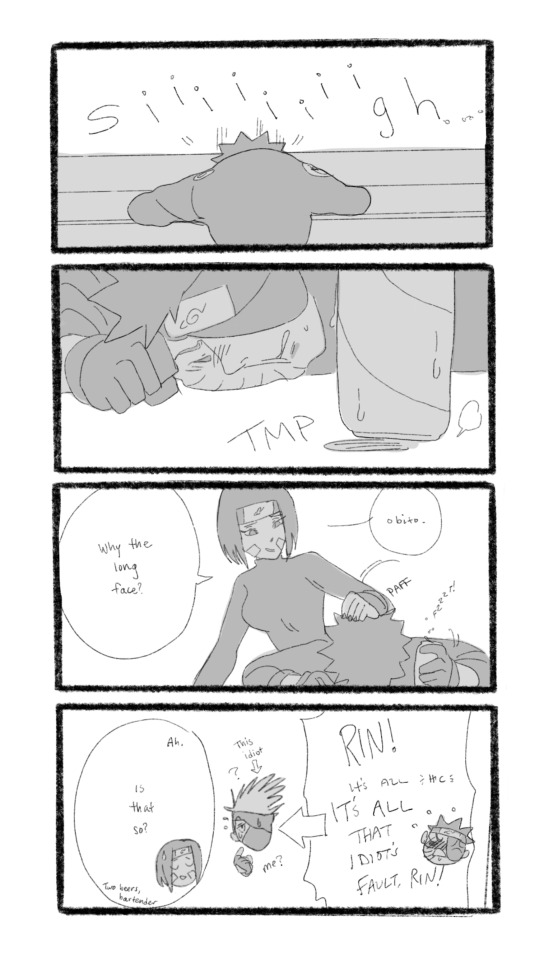


scheming
this is the end for now, i will continue if motivation comes,, check tags
#comic#team minato#my art#obito#rin#kakashi#best team#rin is the best wing woman#sketch#doodle#scheming#plotting#obt#rn#kks#big fan of gremlin rin#troublemakers#alcohol#comedy#humor#please#reblog and tell me what u think rin's grand plan#if you want a part two i will need gremlin energy#maximum effort#black and white#monochrome#naruto fanart#fan comic#uchiha obito#nohara rin
536 notes
·
View notes
Text
4 Alternatives to Popular Writing Advice

Some writing advice get passed off as something every writer has to do. The truth is, these tips might not work for everybody! NaNo participant Nicole Wilbur offers some alternatives to popular writing advice that may be a better fit for your writing needs.
While there are no definitive writing “rules”, there’s certainly writing advice so common it feels like it’s become canon. Most popular writing advice is generally good – but what if it doesn’t light up your brain? What if a particular tip doesn’t resonate with you?
If this popular advice isn’t working - try these alternatives!
Common advice: Make your character want something.
Alternative: Ask what your character is most afraid of.
Your character usually wants something – the MC’s goal driving the story is a common plot, after all. That something needs to be concrete, meaning the audience will know definitively when they’ve achieved their goal.
(Is “found independence” concrete? No. Signed the lease on their first apartment? Yes.)
But if you aren’t sure yet, or what they want doesn’t feel motivating enough to support your inciting incident, start with a different question: what is your character afraid of?
Katniss wants to survive, with her family, yes. But she’s terrified of helplessly watching them die.
Common advice: Identify your story’s theme and stick it on a post- it above your computer.
Alternative: Use the character’s arc to create a main idea statement, and craft several related questions your story explores.
English class really made ‘theme’ feel heavy-handed. In my grade nine English class, we listed the themes of To Kill a Mockingbird as: coming of age, racism, justice, and good vs. evil.
While these are the topics explored in the book, I’ve never found this advice helpful in writing. Instead, I like to use the controlling idea concept (as in Robert McKee’s Story) and exploratory questions (as in John Truby’s Anatomy of Genres).
A controlling idea is a statement about what the author views as the “proper” way to live, and it’s often cause-and-effect. The exploratory question is – well, a question you want to explore.
In It’s a Wonderful Life, the controlling idea is something to the effect of “Life is meaningful because of our relationships” or “our lives feel meaningful when we value our family and community over money.” The question: How can a single person influence the future of an entire community?
Common advice: List out your character’s traits, perhaps with a character profile.
Alternative: Focus on 2-3 broad brushstrokes that define the character.
When I first started writing, I would list out everything I wanted my character to be: smart, daring, sneaky, kind, greedy, etc. I created a long list of traits. Then I started writing the book. When I went back to look at the traits, I realized the character wasn’t really exhibiting any of these.
Instead of a long list of traits to describe your character, try identifying three. Think of these like three brush strokes on a page, giving the scaffolding of your character. Ideally, the combination of traits should be unexpected: maybe the character is rule-following, people-pleasing, and ambitious. Maybe the character is brash, strategic, and dutiful.
Then – and this is the fun part – consider how the traits come into conflict, and what their limits are. What happens when our ambitious rule-follower must break the law to get what she wants? Sure, a character might be kind, but what will make her bite someone’s head off?
Common advice: Create a killer plot twist.
Alternative: Create an information plot.
Readers love an unexpected plot twist: whether a main character is killed or an ally turns out to be the bad guy, they’re thrilling. But plotting towards one singular twist can be difficult.
Instead of using the term plot twist, I like thinking in terms of Brandon Sanderson’s “information” plot archetype.
An information plot is basically a question the reader is actively trying to work out. It could be like Sarah Dessen's Just Listen where we wonder "what happened between Annabel and her ex-best friend?", "why is Annabel's sister acting strangely?" and "who is Owen, really?" Those all have to do with backstory, but information plots can be about pretty much any hidden information. Another popular question is "who is the bad guy?" - or in other words, "who is after the characters?" The Charlie's Angel franchise, for example, tends to keep viewers guessing at who the true antagonist is until the last few scenes.
Nicole Wilbur is an aspiring YA author, writing sapphic action-adventure stories that cure wanderlust. As a digital nomad, she has no house and no car, but has racked up a ridiculous number of frequent flier miles. She chronicles her writing and travelling journey on her YouTube channel and Chasing Chapters substack.
Photo by George Milton
415 notes
·
View notes
Text
Worldbuilding is crazy, like welp guess I'll write an entire wiki page on a rare disease I just made up
#writing#creative writing#fiction writing#worldbuilding#fiction#writeblr#writer problems#write#writer#realistic writing#plotting#story planning#writer's block#writer jokes#writer things#writers#writerscorner
1K notes
·
View notes
Note
Can you explain the fichtean curve to me?
The Fichtean Curve is a simple yet effective approach to storytelling that can add tension, drive conflict, and keep your readers hooked!
We've put together this blog post in the Reading Room to help you make sense of what it is and learn how to use it.

#fichtean curve#plotting#plotting tips#writers#creative writing#writing#writing community#writers of tumblr#creative writers#writing inspiration#writeblr#writerblr#writing tips#writing advice#writblr#writers corner#plotter#advice for authors#helping writers#writing blog#help for writers#writing asks#let's write#writing resources#writers on tumblr#writers and poets#resources for writers#references for writers#writer#writers block
166 notes
·
View notes
Text
Some more thoughts about Branch and Brozone
I love all the recovery fics on AO3, can't get enough of them, but a lot of them seem to have something in common: Branch is the most messed up of his brothers.
Which fair enough, we know Branch's story, lots of terrible things happened to him, but he's in recovery, he has a supportive girlfriend, is a pillar of the community, a surprising number of friends, so Branch basically has his life together
Branch is happy with his life, he's settled. Sure he has some grief and regrets he's not quite ready to talk about, but that's normal.
Bruce seems to be basically in the same place, he has some grief and regrets, but he has a loving and supportive family, is a member of his community, and has a few friends.
Except has Bruce actually dealt with anything? Or just pushed it aside because he has to be strong and responsible for his kids?
Then we have Clay, while he is a valued member of the community, he's trapped, there's no option to leave, no freedom, surrounded by a group of traumatised trolls who are terrified of the outside word to the point they're censoring themselves?
Clay's willingness to just throw Poppy to Viva as a distraction so he and his brothers can escape?
Yeah, no way Clay isn't hiding piles of trauma and his insistence of still playing a role, even if that role is completely different from his previous role
We have John Dory, who's living in the past, refusing to see that his brothers have changed. Who returned to the tree and found everyone gone, and was convinced everyone was dead for years? Who put so much pressure on himself and his brothers, he broke?
And Floyd is going to be extremely traumatised by his near death experience, months of captivity. Althrough lots of stories are already covering his recovery, what happened before then?
But the brothers are safe now.
And the funny thing about Trauma? It's easier to break down when you are finally safe, bringing up all the terrible memories again.
I really want to see a fic where Branch is actually the least messed up of his brothers, because he's dealt with his trauma and knows what is likely to trigger him, has strategies in place when things get harder.
Now the adventure is over, do the brothers attempt to be a family again? Can they meet in the middle without setting each other off? Can they learn to be kind to each other? Can they be kind to themselves?
Or is everything swept under the carpet until it explodes?
199 notes
·
View notes
Note
I noticed many of the protagonists I wrote or thought of writing had either no personality or one too self-inserted (sometimes somewhere in between) and now I can't really connect with the protagonists I write so I wanted to know if you have any advice to help me craft more distinct characters and get attached to them.
First, some homework - pluck out about five pieces of media and nail down what you like about the protagonists within.
What about them appeals to you in particular?
Did you like how they grew and changed?
What struggles did they tackle that only they could handle?
Doesn't have to be neat and orderly, just try to nail down what really appeals to you about your favorite characters. When it comes to your own characters, here are some more things to think about:
Are you writing the character you want to write, or are you writing the character you think you should write? You may not be able to connect to your characters because you're trying to make them something you think they should be rather than what you'd feel more comfortable writing.
Are you projecting your feelings on a larger canvas (aka write what you know)? Are you thinking about how your characters would feel in bombastic circumstances (fighting a dragon, running from the cybercops) based on experiences and emotions you've had (facing off with a teacher, hopefully not running from the real cops but hey, you do what you gotta). The best way to infuse your characters with appeal is to take an emotion or an experience you can relate to and projecting it onto your characters.
Do your characters have internal struggles to go with their external ones? Is that high-stakes heist also paired with the character's struggle to display his real emotions? Does the fight with the evil wizard reflect the character's struggles to connect to their dad? If your story is external-plot heavy, a good way to flesh out the characters within is to connect their internal wants/needs/desires with the events going on around them. That zombie fight could be all the more enticing if the main couple is having a massive break-up during it.
Figuring out how to write a protagonist is often more than filling out a character sheet. Great if you can do that (I can't so like, go brag about it somewhere else), but often times you'll have to flesh out the character the hard way, but plotting out their journey before you write it. Work on their inner needs and emotional battles to draw them out as people.
Don't know where to start with figuring out a character at all? Grab an archetype list and get mixing and mashing. You may not come up with usable ideas right away, but you'll be able to pick out the ideas that appear to you until you have a handy list of things to lean on. Tropes are tools to be used, after all, and anything that could add to your characters is a tool with keeping. Good luck!
499 notes
·
View notes
Text

How are literary and Commercial Stories Different?
Literary plots are meant to explore a specific theme/convey a message to the reader.
Literary plots can be slow paced.
Literary plots can have different types of endings.
Commercial plots are meant to entertain.
Commerical plots are fast-paced.
Commercial plots must almost always have a happy ending.
For Literary Plots:
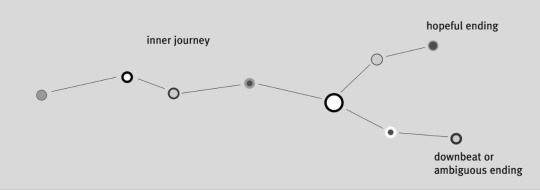
detailed characterization: authors explore the inner change and development of the character (which means the external action is going to be slower paced)
use of metaphors, symbols, and presentation of ideas in a way that requires analysis
aims to deliver a message or moral
On the other hand, Commercial Plots:
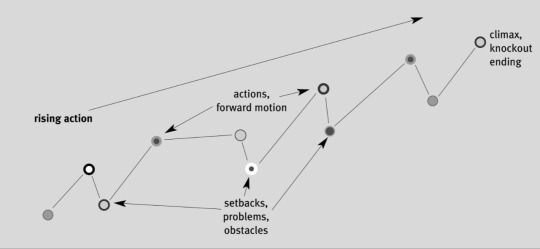
fast-paced and action oriented, delivers highly emotional scenes so entice the reader rather than ambiguous writing
uses intuitive language, setting and tropes to help readers immerse in the story world quickly
often, the stakes are a lot higher
the ending needs to provide a sense of satisfaction for the readers. Otherwise, they might not feel compensated for all the time they invested in reading.
If you like my blog, buy me a coffee! ☕
Reference: <Write Great Fiction: Plot and Structure (techniques and exercises for craftin a plot that grips readers from start to finish)> by James Scott Bell
#writer#writers#creative writing#writing#writing community#writers of tumblr#creative writers#writing inspiration#writeblr#writing tips#writers corner#writers community#poets and writers#writing advice#writing resources#writers on tumblr#writers and poets#helping writers#writing help#writing tips and tricks#how to write#writing life#let's write#resources for writers#references for writers#plot#plotting#story writing#novel writing#authors
139 notes
·
View notes
Text
Plot tables: Mapping out and organizing all your plots and storylines

Can't organize your plot and are juggling between several plot lines? I got your back, I present: Plot tables!
(I'm probably not the only person to use these, but I have no idea if these are commonly used and I just don't know about it or I actually did something with this)
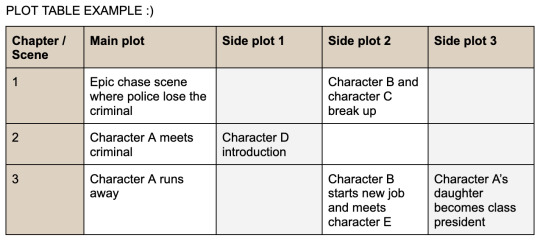
Here's a loose example I threw together. It's just a normal table where each column represents a different storyline within the same story. It shows you roughly what should happen in each chapter / scene.
e.g., from the example table, we see that in chapter / scene 1, there's a chase scene where the police lose track of the criminal they're following, as well as in the same chapter we see character B and C break up.
It's nothing groundbreaking, but it's something I want to share considering the amount of people I see complaining about juggling 50 million storylines and having no orderly way to keep track of it

#writers#writers on tumblr#writeblr#writing inspiration#your local sewer rat#navigation#writing tips#writing help#writing advice#creative writing#writing#plotting#writing plot#storylines#storyline#organizing plot#planning plot#planning a story#story planning
4K notes
·
View notes
Text
Connecting With Your Reader's Emotions
We’ve all read a book or story that captured our hearts and made us feel things very deeply. It’s a superpower writers have, but it isn’t something we’re born with.
Connecting with your reader’s emotion happens when you’ve practiced writing. It becomes easier after each rough draft, each great draft, and each terrible draft.
But—if you want to save yourself some time, these are a few perspectives you can use to sharpen your writing tools.
1. Display Your Protagonist’s Inner Emotions
Your readers want to experience a character’s journey by connecting with them emotionally. We pick up books to feel things while learning something or just taking a break from life.
Displaying your protagonist’s inner conflict could look something like: She saw the ghost in the hallway, which scared her.
Your reader will feel more engaged if you describe how fear makes your protagonist feel instead of them feeling fear generally: She saw the ghost in the hallway and fear shot through her body like lightning.
You don’t need tons of flowery language to make your reader feel the same things as your character. Sometimes a minor descriptor or simile can do the job.
2. Show Your Protagonist’s Feelings Through External Reactions
Emotions don’t solely exist inside our hearts and minds. We also have external reactions to them. That could be nodding in confusion, shifting uncomfortably in a chair, or bending over laughing.
Consider this example:
“I love your laugh,” Anita said to Alice. “It makes my heart skip a beat.”
Heat spread through Alice’s cheeks as she smiled.
“Oh, you don’t mean that.”
You don’t need to mention how it feels to receive a compliment from a crush or why flattery is nice to hear. The physical reaction of blushing is something the reader can relate to and understand.
3. Make Your Reader Feel Something Your Character Doesn’t
This is a fun one. Sometimes characters have to figure something out, but the reader already knows what’s going on.
This could happen when you’re writing a horror story that is supposed to teach the reader about the joy of recognizing your own strength. The protagonist has the skills in the beginning to defeat the evil antagonist, but must reach rock bottom before cheering himself on. The whole time, the reader knows they can beat the antagonist and survive because they have the brains/strength/creativity, etc.
You could also write an enemies-to-lovers arc where it’s obvious to the reader that both characters are in love with each other long before they realize it. The reader should want them to embrace the scary feeling of falling in love, because that’s what you’re trying to teach through your story.
Consider Your Story’s Purpose
Writers have a purpose behind every story. What do you want readers to learn, consider, or experience through your own? You can use these methods of connecting with your reader’s emotions to make your plot’s purpose that much more powerful and engaging.
#emotional fiction#writing tips#writing advice#writing emotions#plotting#plotting tips#character creation
2K notes
·
View notes
Text
the best way to end a love triangle plot line is with polyamory
3K notes
·
View notes
Text
Writing Tips - What Kind Of Writer Are You?
Not all writing tips work for everyone, you need to learn to give things a try and accept when they aren’t helpful. Ask yourself these questions to see what writing practices might work best for you - and be sure to experiment if you want a better understanding!
1. Does your word count motivate or discourage you?
If seeing your word count motivates you, stick it everywhere! I like to constantly check word counters, add up my chapter word counts, section word counts and total word count, calculate what my word count will be by the time I’m done with my current writing session, etc
But if the word count is intimidating and discouraging to you, like it is to many people, measure your productivity by time spent on your project rather than the word count; dedicate a certain amount of time to the project every day/week/whatever works for you, try writing sprint videos on YouTube, anything that doesn’t mention your word count. It can always be edited later on
2. How much/often can you write before it’s a chore?
It’s well-known that the vast majority of people can’t consistently keep up with NaNoWriMo’s 1667 words per day practice, so how far can you push the metrics before it gets overwhelming? I personally find that writing daily isn’t something I can do without it feeling like I’m forcing myself to do a task rather than engaging in a fun project, but I can commit easy enough to meeting a weekly goal. At the moment I’m on 1000 words per week, but you can also change how many words are needed, you just need to be able to consistently meet said goal without feeling overwhelmed by it, even if it feels too small
3. Where do you fall on the plotter scale?
A true pantser has no plan for their story and goes in head-first with a confidence I envy - a good amount of writers aren’t that. Chances are you’re a plotter of some variety, but how much so? It’s always worth testing the waters with how much or how little you can work with as a set plan. Personally, I like to plot five chapters in advance and then write them before plotting the next five - it gives me the freedom to see where my writing deviates from my anticipated plan and adapt it from there, which has been critical to many big changes in the story
#question#quiz#plotting#pantsing#writing#writers#writeblr#bookblr#book#my writing#writers on tumblr#writerscommunity#original#writers of tumblr#how to write#on writing#creative writing#writing prompt#writer#write#writers and poets#writblr#female writers#writer things#writerscreed#writing is hard#writing advice#writing life#original writing#writer problems
104 notes
·
View notes
Text
5 Essential Tips for Mastering Scene Writing in Your Novel
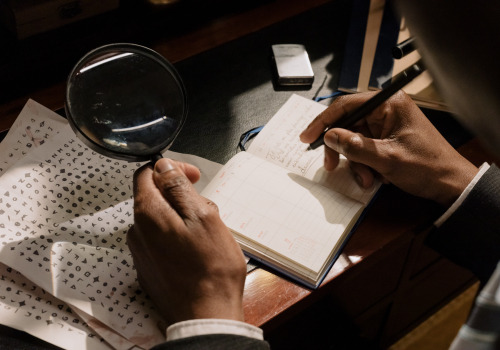
There's many parts involved when writing a scene. Knowing how these different pieces work together may help you move forward in your novel. NaNo Participant Amy de la Force offers some tips on brushing up your scene writing knowledge.
Scenes are the building blocks of a novel, the stages where characters spring to life, conflicts brew and emotions run high. Mastering the art of scene writing is crucial for any aspiring writer, especially in the lead-up to NaNoWriMo. But what is a scene, and how do you effectively craft one?
What is a Scene?
A scene is a short period of time — in a set place — that moves the story forward with dramatic conflict that reveals character, generally through dialogue or action. Think of writing a scene as a mini-story with a beginning, middle and end, all contributing to the narrative.
Why Scene Writing is Your Secret Weapon in Storytelling
Well-crafted scenes enhance your story to develop characters, advance the plot, and engage readers through tension and emotion. Whether you're writing a novel, short story or even non-fiction, scenes weave the threads of your story together.
Tip #1: Scenes vs. Sequels
According to university lecturer Dwight Swain in Techniques of the Selling Writer, narrative time can be broken down into not just scenes, but sequels.
Scene
The 3 parts of a scene are:
Goal: The protagonist or point-of-view (POV) character’s objective at the start of the scene.
Conflict: For dramatic conflict, this is an equally strong combination of the character’s ‘want + obstacle’ to their goal.
Disaster: When the obstacle wins, it forces the character’s hand to act, ratcheting up tension.
Sequel
Similarly, Swain’s sequels have 3 parts:
Reaction: This is the POV character’s emotional follow-up to the previous scene’s disaster.
Dilemma: If the dramatic conflict is strong enough, each possible next step seems worse than anything the character has faced.
Decision: The scene’s goal may still apply, but the choice of action to meet it will be difficult.
Tip #2: Questions to Ask Yourself Before Writing a Scene
In Story Genius, story coach and ex–literary agent Lisa Cron lists 4 questions to guide you in scene writing:
What does my POV character go into the scene believing?
Why do they believe it?
What is my character’s goal in the scene?
What does my character expect will happen in this scene?
Tip #3: Writing Opening and Closing Scenes
Now that we know more about scene structure and character considerations, it’s time to open with a bang, or more to the point, a hook. Forget warming up and write a scene in the middle of the action or a conversation. Don’t forget to set the place and time with a vivid description or a little world-building. To end the scene, go for something that resolves the current tension, or a cliffhanger to make your scene or chapter ‘unputdownable’.
Tip #4: Mastering Tension and Pacing
A benefit to Swain’s scenes and sequels is that introspective sequels tend to balance the pace by slowing it, building tension. This pacing variation, which you can help by alternating dialogue with action or sentence lengths, offers readers the mental quiet space to rest and digest any action-packed scenes.
Tip #5: Scene Writing for Emotional Impact
For writing a scene, the top tips from master editor Sol Stein in Stein on Writing are:
Fiction evokes emotion, so make a list of the emotion(s) you want readers to feel in your scenes and work to that list.
For editing, cut scenes that don’t serve a purpose (ideally, several purposes), or make you feel bored. If you are, your reader is too.
Conclusion
From understanding the anatomy of a scene to writing your own, these tips will help elevate your scenes from good to unforgettable, so you can resonate with readers.

Amy de la Force is a YA and adult speculative fiction writer, alumna of Curtis Brown Creative's selective novel-writing program and Society of Authors member. The novel she’s querying longlisted for Voyage YA’s Spring First Chapters Contest in 2021. An Aussie expat, Amy lives in London. Check her out on Twitter, Bluesky, and on her website! Her books can be found on Amazon.
Photo by cottonbro studio
#nanowrimo#writing#writing advice#scene writing#writing scenes#plotting#by nano guest#amy de la force
430 notes
·
View notes